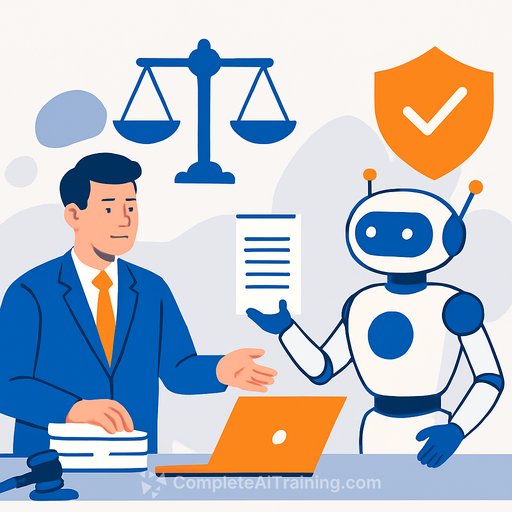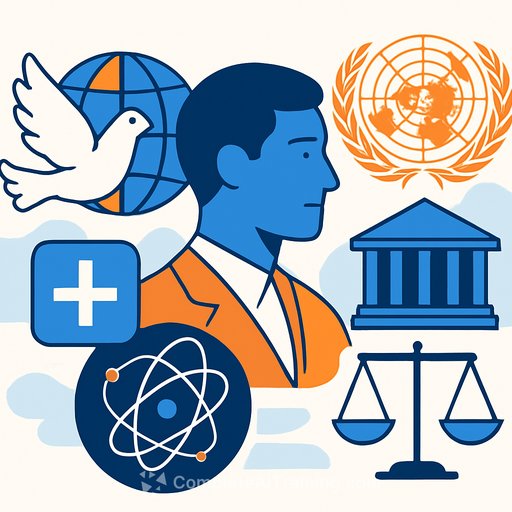AI frees lawyers to tackle justice, not paperwork
Lawyers don't win matters by pushing paper. They win by thinking, advising, negotiating, and advocating. AI can clear the administrative bottlenecks so you spend more time on outcomes, less on busywork.
Used with guardrails, AI trims hours from drafting, review, and research. That means faster service, lower costs, and more capacity for impact.
What AI is actually good at
- Document automation: Intake-to-first-draft for NDAs, engagement letters, demand letters, and routine motions.
- Contract review: Flag deviations from playbooks, propose redlines, and surface risky clauses for human judgment.
- Legal research assist: Retrieve authorities from trusted databases and draft outlines with citations you verify.
- eDiscovery triage: Classify, de-duplicate, cluster, and prioritize review with defensible logs.
- Client intake and FAQs: Front-door chat that routes matters, collects facts, and sets expectations without giving legal advice.
Where you still own the work
AI drafts; you decide. Judgment, strategy, negotiation, courtroom presence, and ethics stay squarely with you.
You validate facts, confirm citations, align advice to client risk, and protect privilege. Final sign-off is human.
Practical workflows you can deploy this quarter
- Template-to-draft engine: Feed a fact memo and a house template; return a first draft with bracketed fields for review.
- Playbook-led contract review: Compare third-party paper against your clause library; auto-suggest standard positions and fallbacks.
- Research brief outline: Provide issue statement and jurisdiction; generate an outline with cases to Shepardize/KeyCite.
- eDiscovery issue tagging: Classify by issue, privilege, and sensitivity; export audit logs for defensibility.
- Pro bono triage: Intake bot collects facts, checks eligibility, and drafts a plain-language next-step letter.
Guardrails and ethics you can't skip
- Confidentiality: Don't paste client data into public tools with data retention. Use on-prem, private, or zero-retention options.
- Verification: Always check citations, quotes, numbers, and dates. Hallucinations exist; your license doesn't care why.
- Bias and fairness: Audit outputs for disparate impact. Document your checks.
- Duty of tech competence: Know the basics or delegate to someone who does. See ABA Model Rule 1.1 (Comment 8). ABA Model Rule 1.1
- Risk framework: Map use cases, harms, and controls. NIST's AI RMF is a practical starting point. NIST AI RMF
Implementation playbook for firms and legal departments
- Pick one high-volume process (e.g., NDAs, discovery holds). Aim for a 30-50% cycle-time cut.
- Define metrics: hours saved per matter, turnaround time, accuracy rate, rework %, client satisfaction.
- Choose deployment: private LLM, vendor SaaS with zero retention, or hybrid. Get security and indemnities in writing.
- Standardize inputs: templates, clause libraries, playbooks, and prompt snippets. Consistency beats heroics.
- Human-in-the-loop: make review a step, not a suggestion. Log who approved what, and when.
- Train the team: short sessions on prompts, red flags, and verification checklists. Reward saved time, not volume.
Access to justice: more reach, same headcount
Automation slashes overhead, so you can accept more matters without burning out staff. That's real capacity, not just busyness.
- Guided intake that captures facts once and populates forms automatically.
- Plain-language letters in multiple languages with a human final pass.
- Deadline calculators and reminder flows for pro se support.
What to avoid
- Uploading client files to public chat tools with retention enabled.
- Filing AI-drafted content without cite-check and proofreading.
- Letting models write risk positions that conflict with client goals or policy.
- Unclear disclosure to courts or regulators where required by local rules.
Simple verification checklist
- Facts: cross-check against the record and client documents.
- Citations: validate with Shepard's/KeyCite; read the cases.
- Math: recalc damages, interest, deadlines, and dates.
- Style: enforce your templates and defined terms.
- Privacy: confirm data handling and retention settings before use.
Example prompts you can adapt
- Contract review: "Compare this draft to our playbook. Flag deviations by clause, propose redlines, and explain the business risk in one sentence per issue."
- Research outline: "Jurisdiction: [X]. Issue: [Y]. Produce a brief outline with controlling authority and key quotes to verify. Include contrary authority."
- Discovery triage: "Label each document for issue, privilege likelihood, and sensitivity. Return a CSV with doc ID, labels, confidence, and rationale."
KPIs to track from day one
- Average time to first draft
- Rework percentage after human review
- Matters per attorney per month
- Client turnaround time and satisfaction
- Cost per matter vs. baseline
Level up your team
AI won't replace your judgment. It does reward firms that standardize playbooks, train consistently, and measure results.
If you want structured upskilling, explore practical courses by job role. Complete AI Training: Courses by Job
Bottom line
AI frees lawyers to spend less time on paperwork and more time on justice. Start small, enforce guardrails, measure results, and let the hours shift from admin to outcomes.
Your membership also unlocks:






